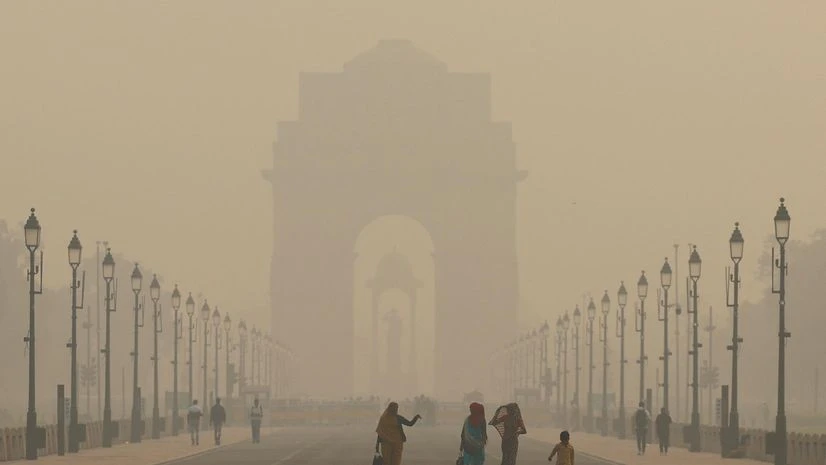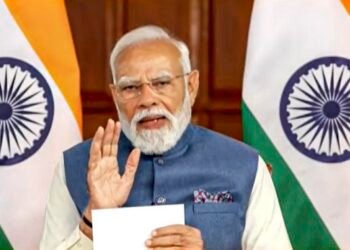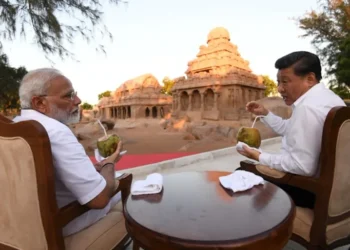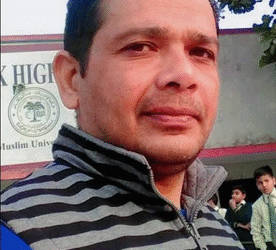BJP’s pre-election pledges of a “Clean Air Mission” face scrutiny as pollution spikes months after taking power. Calm winds, stubble burning, and unchecked emissions have trapped Delhi under a toxic haze.
BY PC Bureau
New Delhi, November 9, 2025: Nine months after the Bharatiya Janata Party (BJP) swept to power in the February 2025 Delhi Assembly elections on an ambitious environmental platform, the national capital is once again gasping for breath. On Sunday, November 9, Delhi-NCR awoke under a suffocating blanket of smog, with visibility reduced to a few meters and the Air Quality Index (AQI) plunging into the ‘severe’ category — the worst of the season so far.
Data from the Central Pollution Control Board (CPCB) showed Delhi’s 24-hour average AQI at 391, firmly in the ‘very poor’ zone, while 24 out of 39 monitoring stations recorded readings above 400 — levels considered acutely hazardous.
The most affected hotspots included Bawana (436), Patparganj (425), RK Puram (422), Alipur (415), Sonia Vihar (415), Anand Vihar (412), and Chandni Chowk (409). Across the NCR, air quality was little better — Noida (391), Greater Noida (366), Ghaziabad (387), and Gurugram (252) all recorded unsafe levels. On Saturday, Delhi had already been ranked India’s most polluted city, with an AQI of 355.
Real-time data from independent monitors pegged the citywide AQI even higher, around 384, driven by PM2.5 concentrations of 267 µg/m³ — nearly 17 times the World Health Organization’s safe limit of 15 µg/m³.
READ: Two Most-Wanted Indian Gangsters Nabbed in USA, Georgia
BJP’s Green Pledges Meet the Smog
The BJP’s “Viksit Delhi Sankalp Patra 2025” manifesto had cast clean air as the centrepiece of its campaign, promising a transformative “Delhi Clean Air Mission” aimed at halving average AQI levels by 2030 and cutting PM2.5 and PM10 concentrations by 50%.
Among its flagship commitments: converting half of Delhi’s vehicles to electric or hybrid models, achieving a 100% electric bus fleet, and eliminating industrial emissions into the Yamuna alongside expanded water treatment capacity to 1,500 MGD.
Union Minister Nitin Gadkari had assured voters of a congestion-free, pollution-free Delhi within five years, backed by a ₹700 crore flood-mitigation plan and a massive afforestation drive. These pledges struck a chord with voters weary of annual smog seasons, helping the BJP unseat the Aam Aadmi Party (AAP).
Yet nine months later, progress appears minimal. Delhi’s average AQI for 2025 stands at 144, only a modest improvement from 169 in 2024. November alone has seen two spikes above 350, undercutting early-year gains and casting doubt on the pace of reform.
A Lethal Brew of Stubble, Still Air and Smoke
The India Meteorological Department (IMD) attributes the current spike to a combination of stagnant meteorological conditions and seasonal human factors. Minimum temperatures have dipped to 13°C, and wind speeds have fallen below 5 km/h, creating an “atmospheric cap” that traps pollutants near the ground.
Dense fog interlaced with smog slashed visibility to under 200 meters in many areas. With no rainfall forecast for the coming week, relief appears distant.
Meanwhile, stubble burning in Punjab and Haryana contributed 31.24% of Delhi’s PM2.5 on Sunday — the highest single-day share this season — despite repeated advisories from the Commission for Air Quality Management (CAQM). Local pollution sources continue to worsen the mix: vehicular emissions (around 20%), construction dust, and industrial effluents remain unchecked.
While Stage II of the Graded Response Action Plan (GRAP) has banned coal use and raised parking fees to curb traffic, Stage III curbs—including halts on construction and restrictions on diesel vehicles—remain unenforced. Officials argue the situation is “under control,” even as AQI readings breach 400 across more than half the city’s monitoring stations.
Mounting Health Emergency
Doctors warn that the capital’s air has reached crisis levels. “Inhaling Delhi’s air today is equivalent to smoking 20 to 25 cigarettes a day,” said a senior pulmonologist at AIIMS, citing dangerously elevated PM2.5 exposure.
Hospitals across NCR are reporting a 15–20% surge in respiratory and cardiac cases this week. Children, senior citizens, and those with asthma or heart disease are at greatest risk.
Health authorities advise residents to seal windows, use HEPA-filter air purifiers, wear N95 masks, and stay hydrated. Schools in parts of NCR have already shifted to online classes. Experts at the Centre for Science and Environment (CSE) warn that reactive, short-term responses are no substitute for year-round clean air management.
Rhetoric vs. Reality
Environmental activist Sunita Narain summed up the frustration: “Delhi’s winters turn us into inhabitants of a gas chamber, yet every year the responses remain seasonal and superficial.”
As the BJP’s promises face their first winter test, the toxic haze has become both a public health emergency and a political reckoning. Converting electoral rhetoric into measurable relief will require sustained enforcement, regional cooperation on crop-residue burning, rapid EV adoption, and dust-control technologies.
Until then, Delhi’s tryst with pollution remains unbroken — its promises of clean air dissolving each dawn into another cloud of toxic grey.













